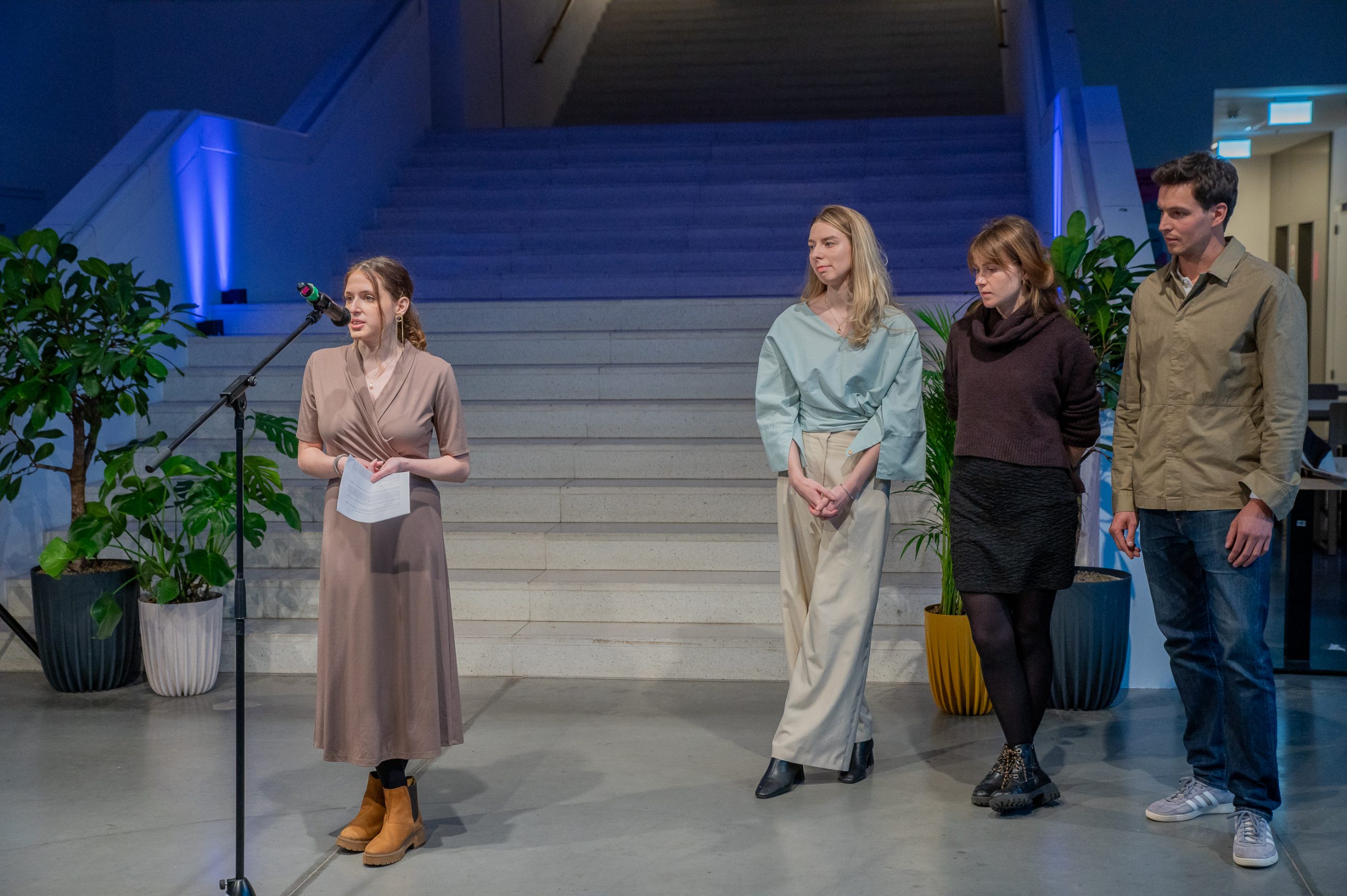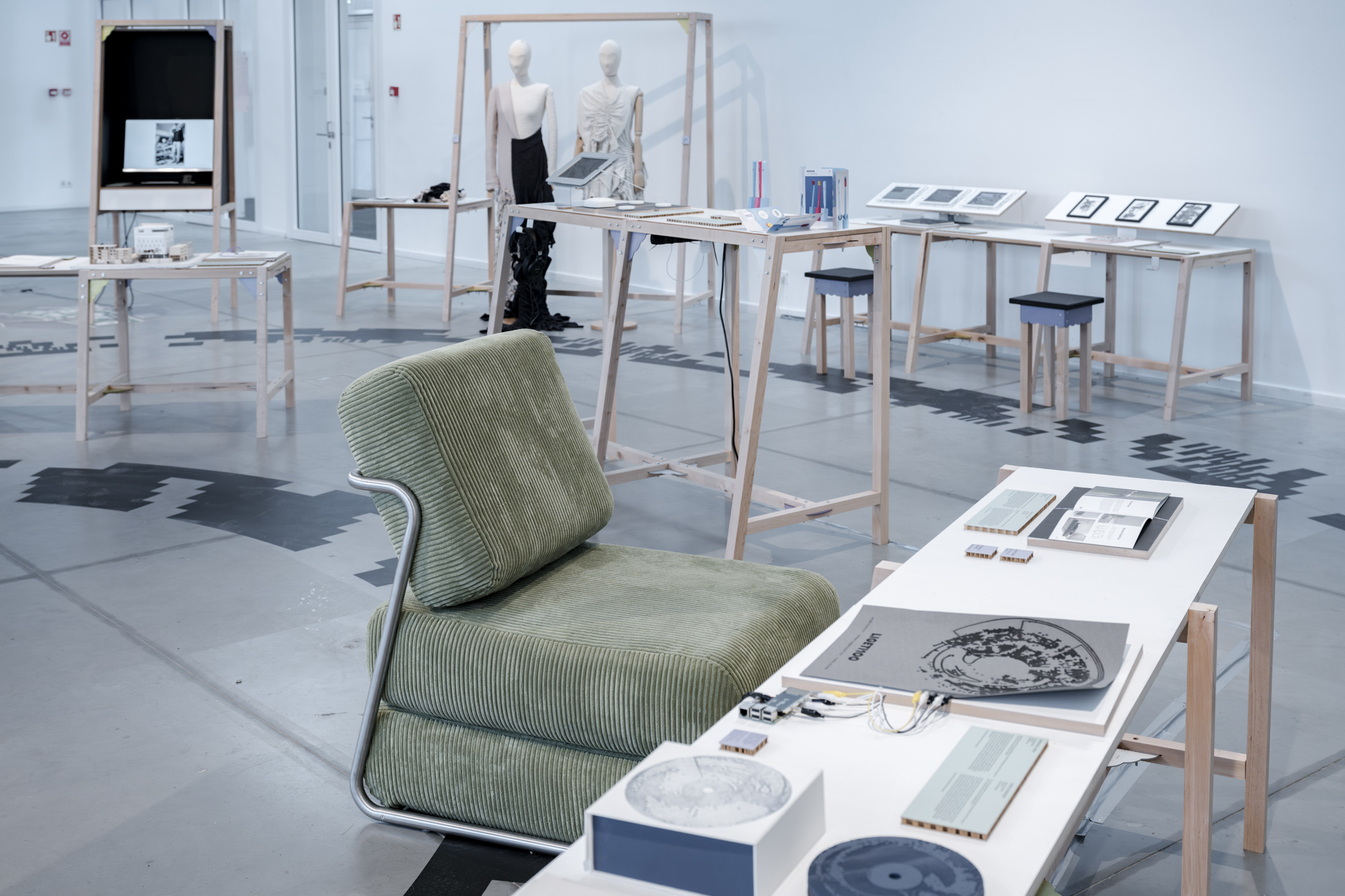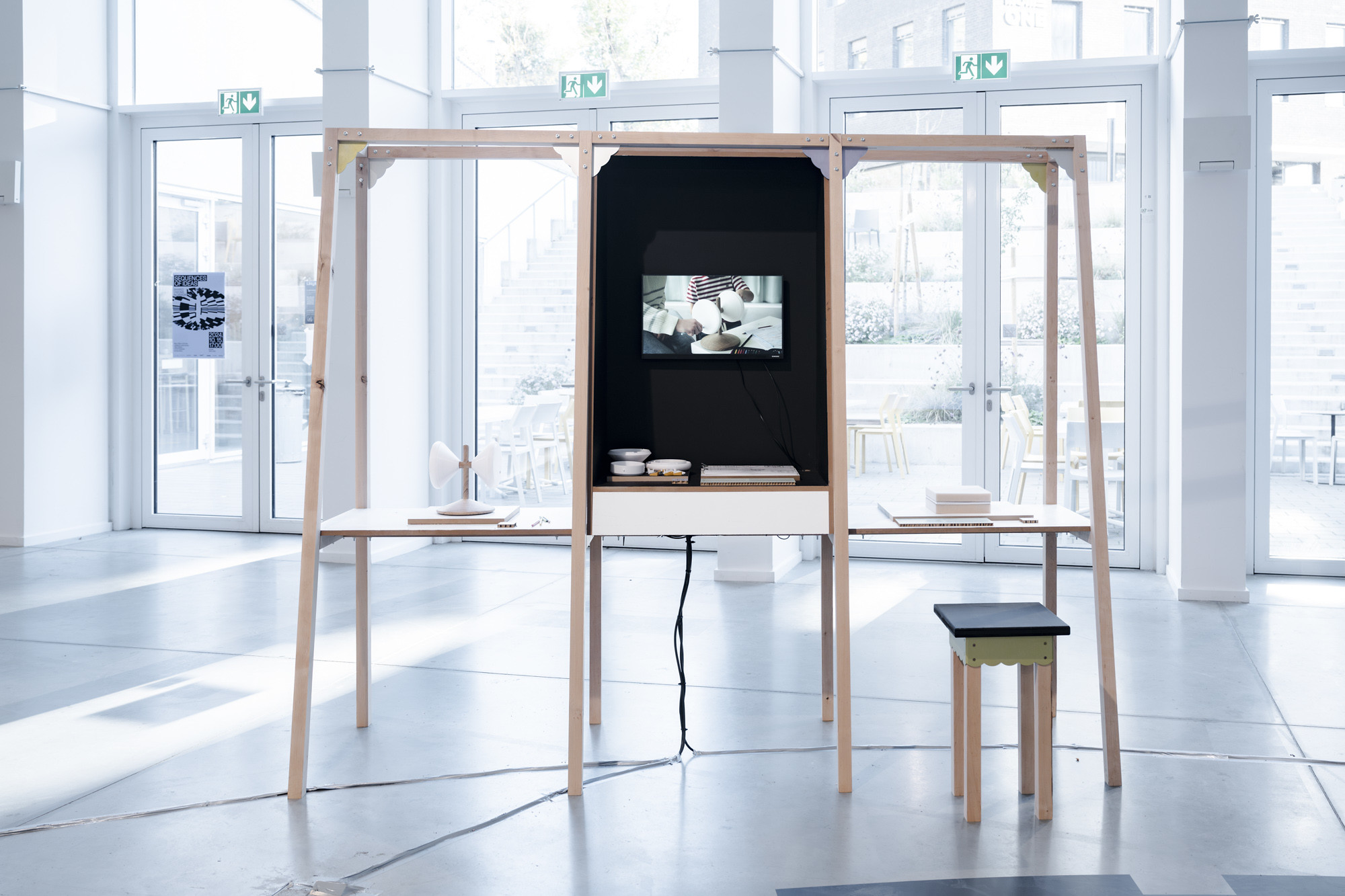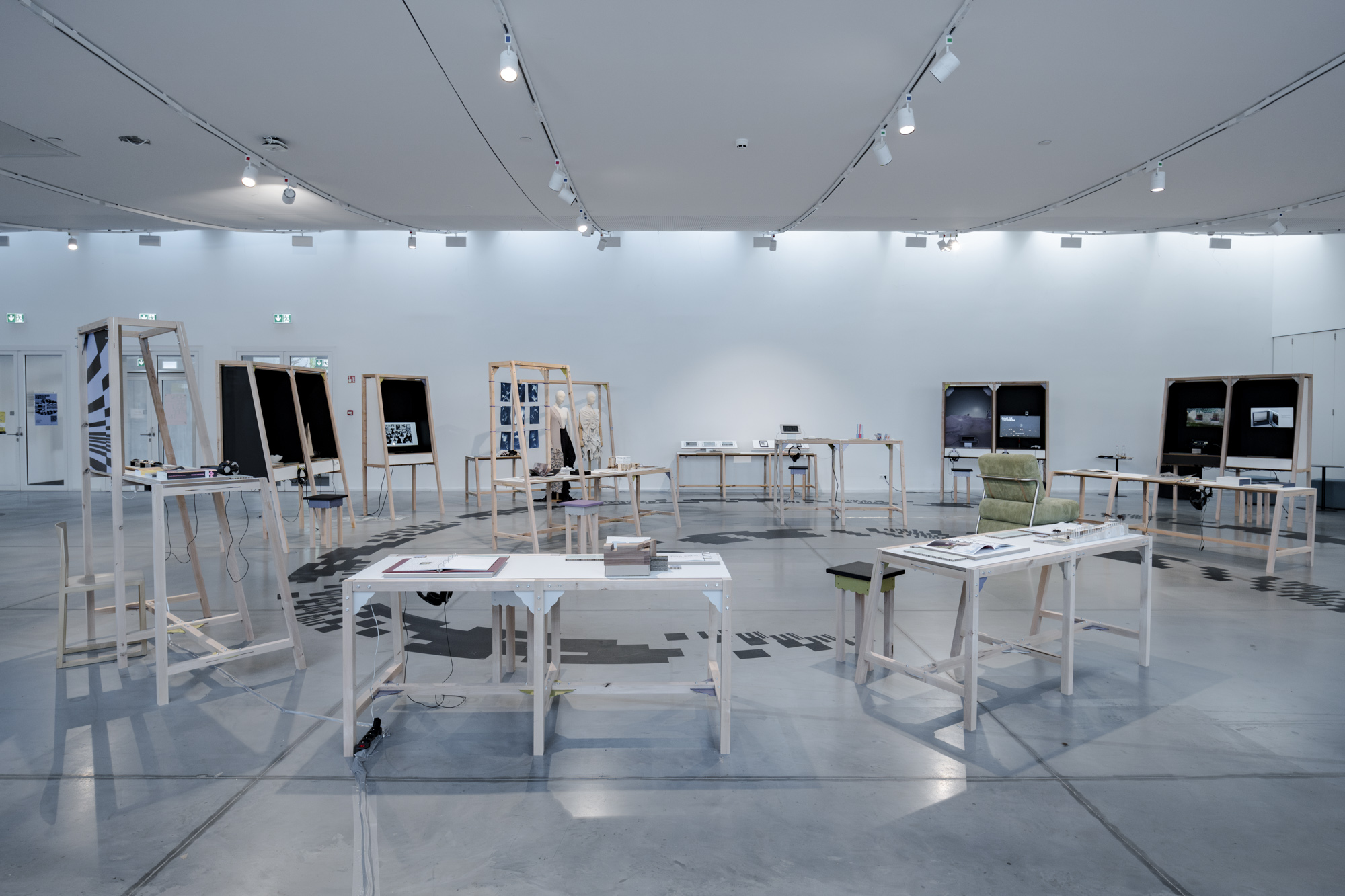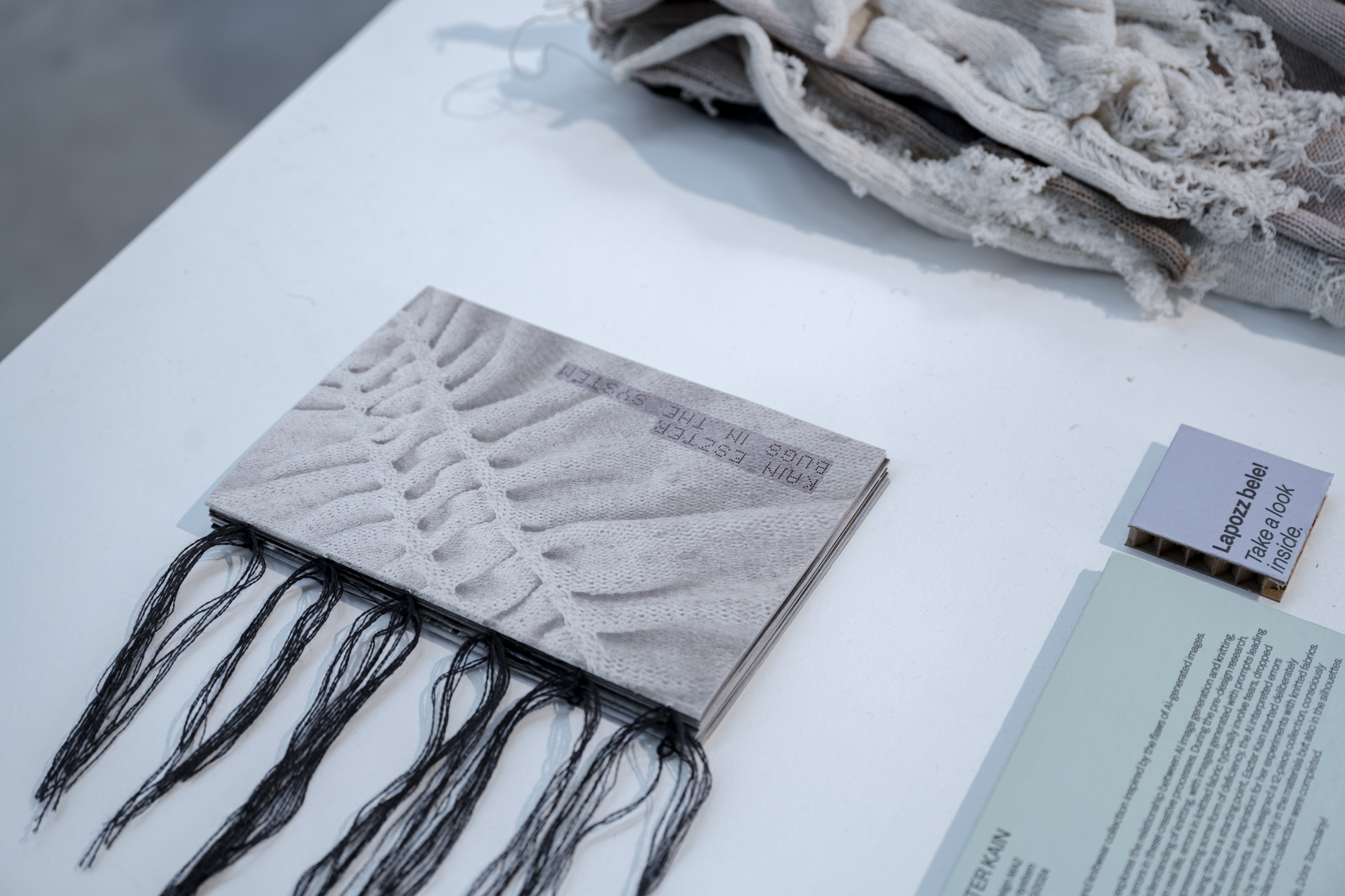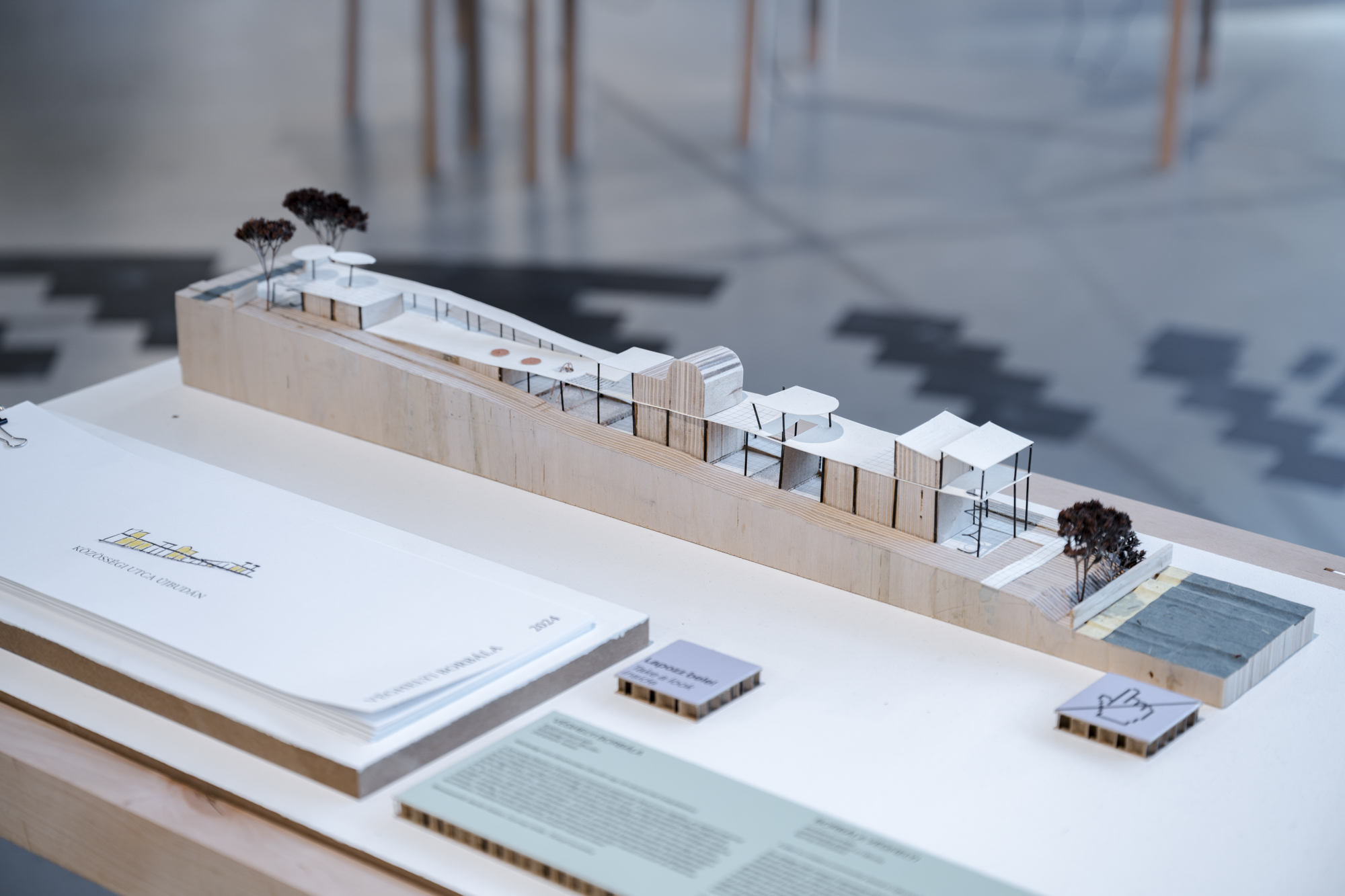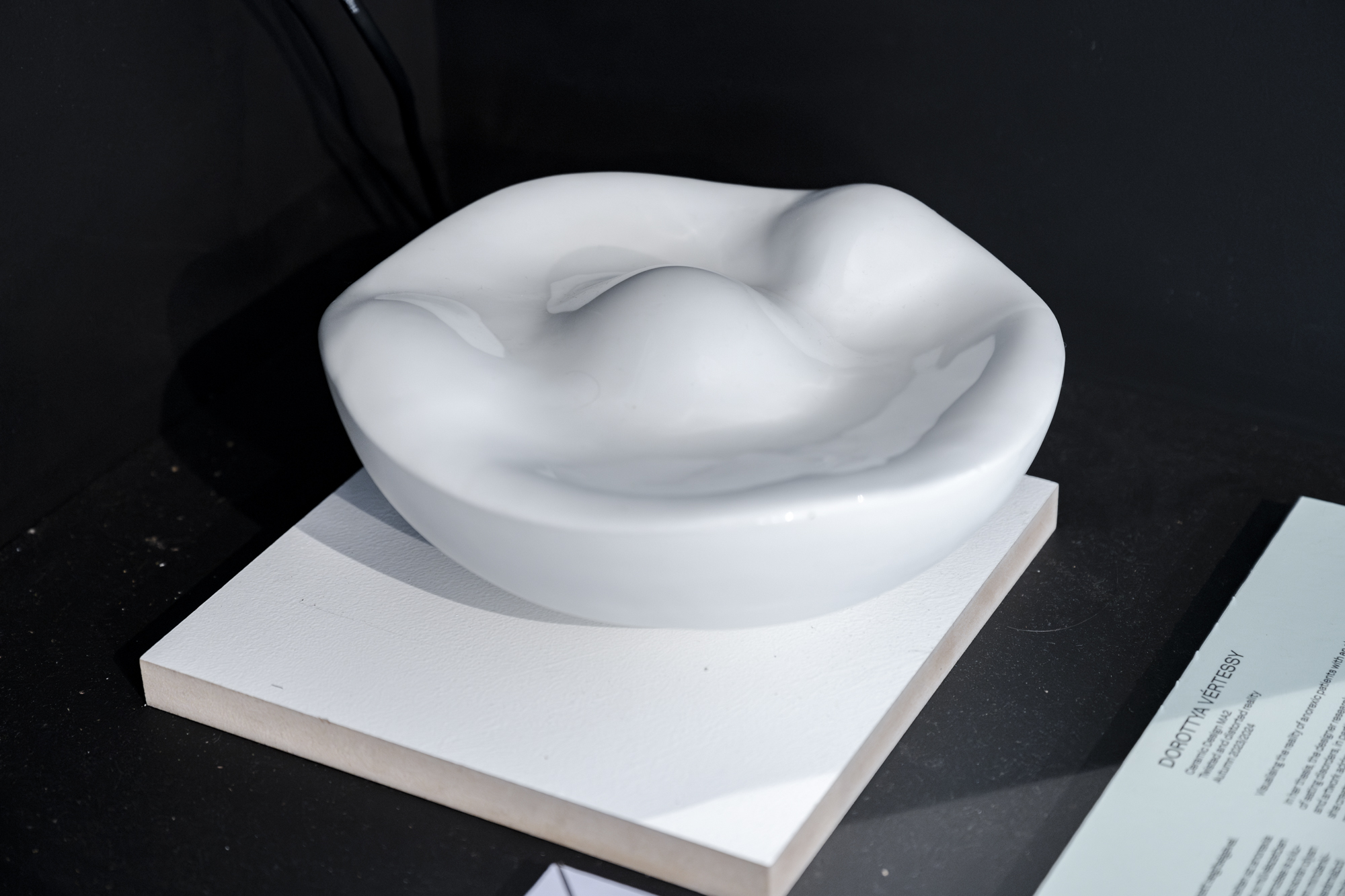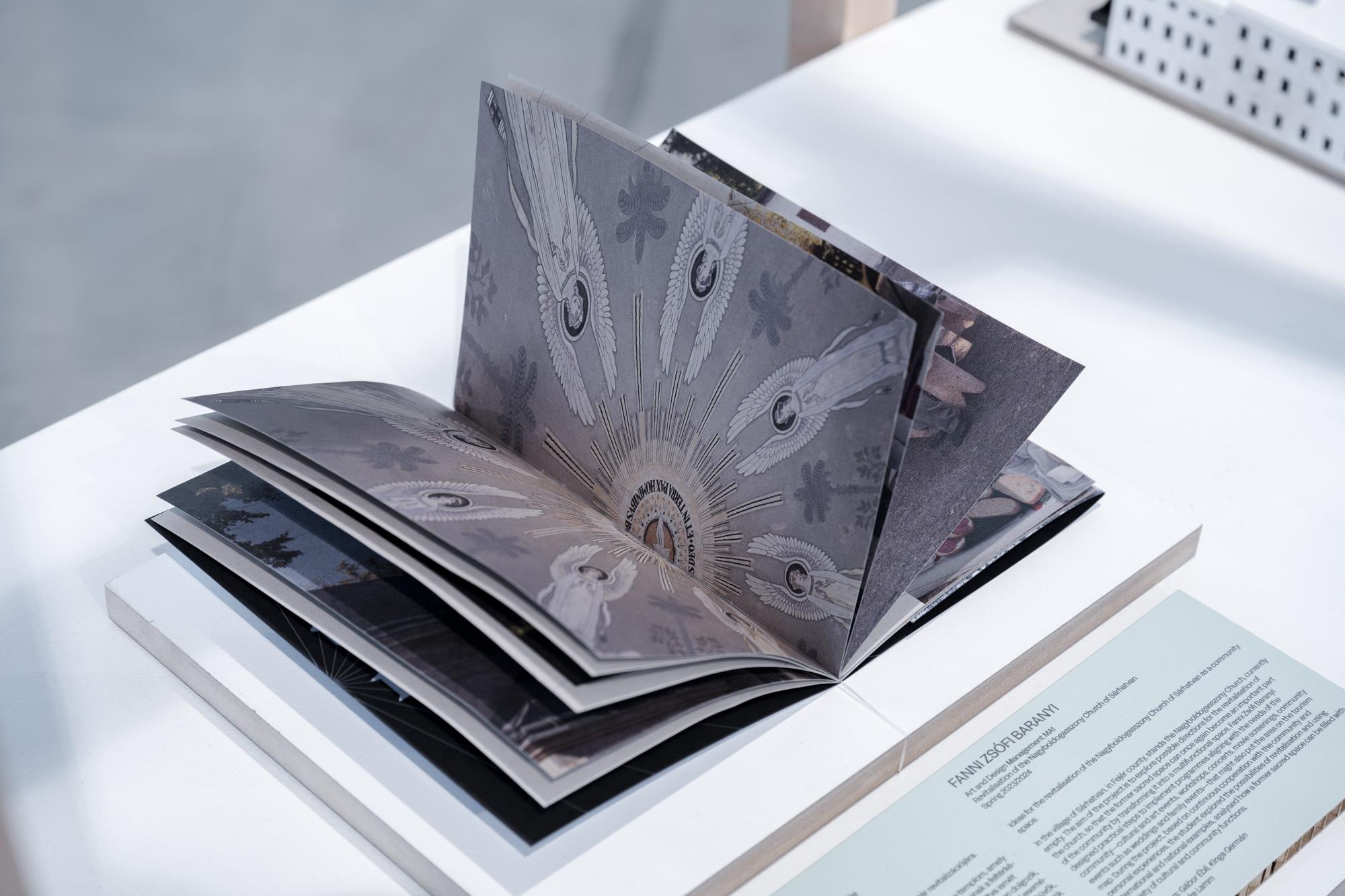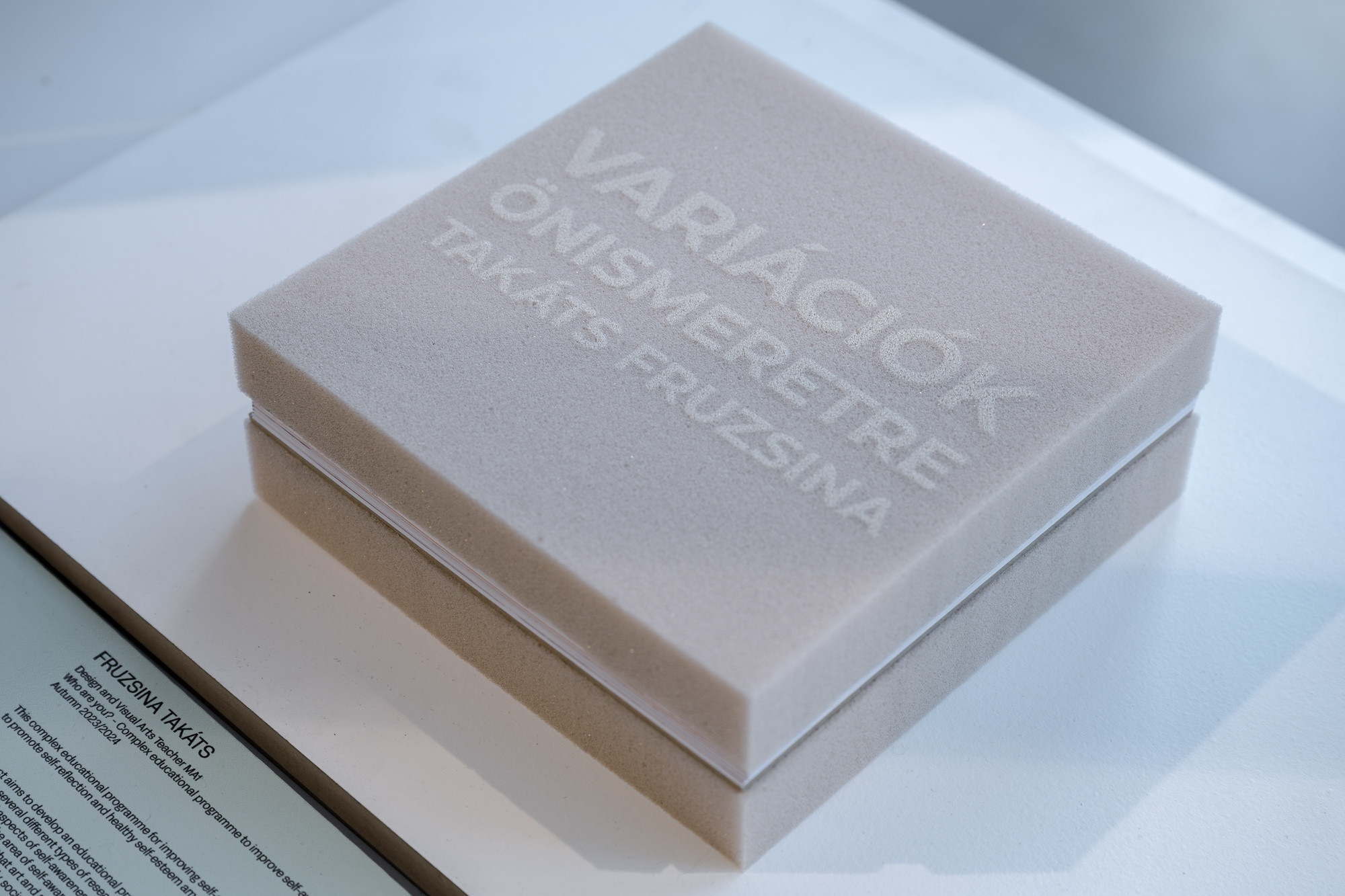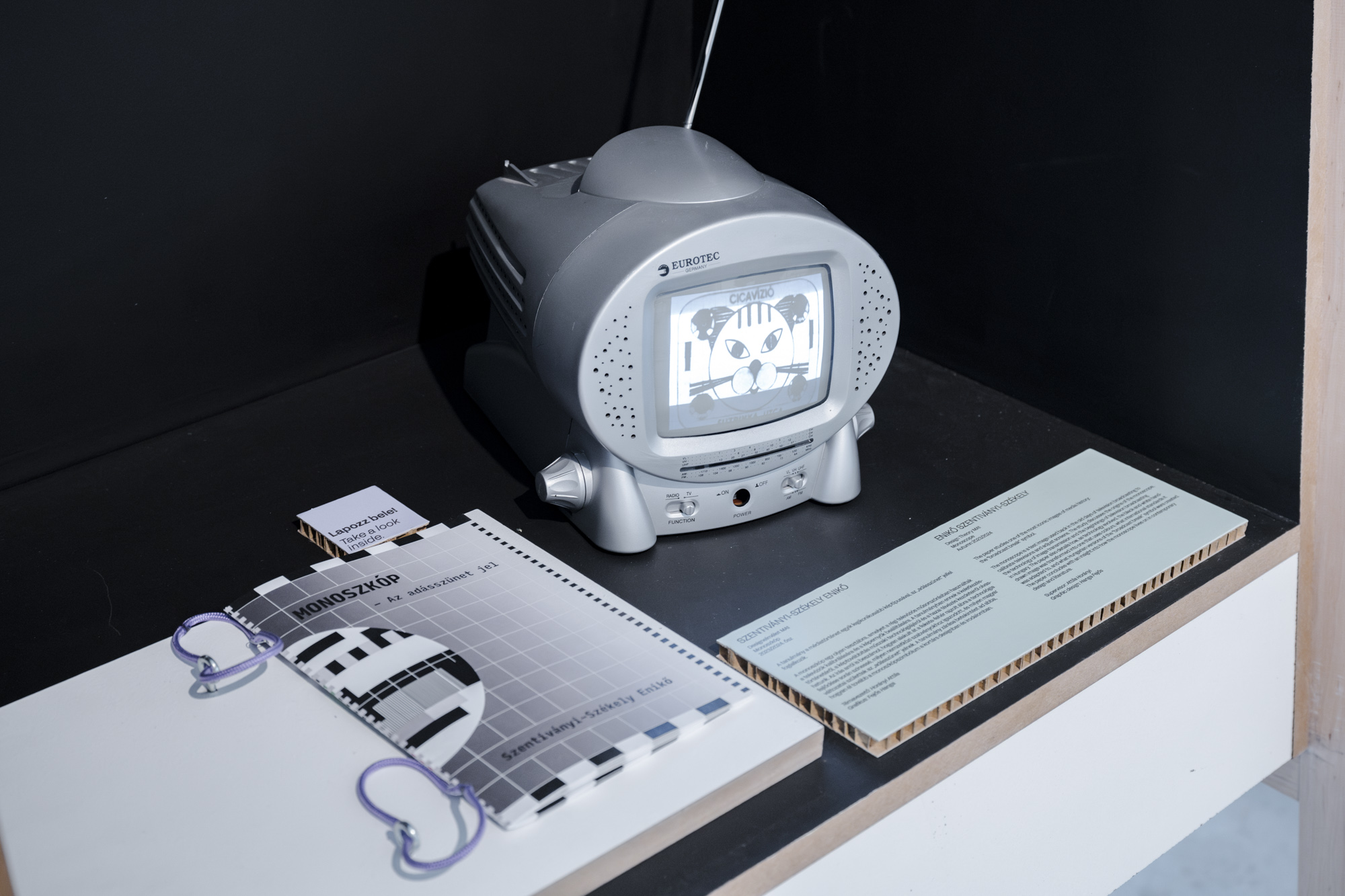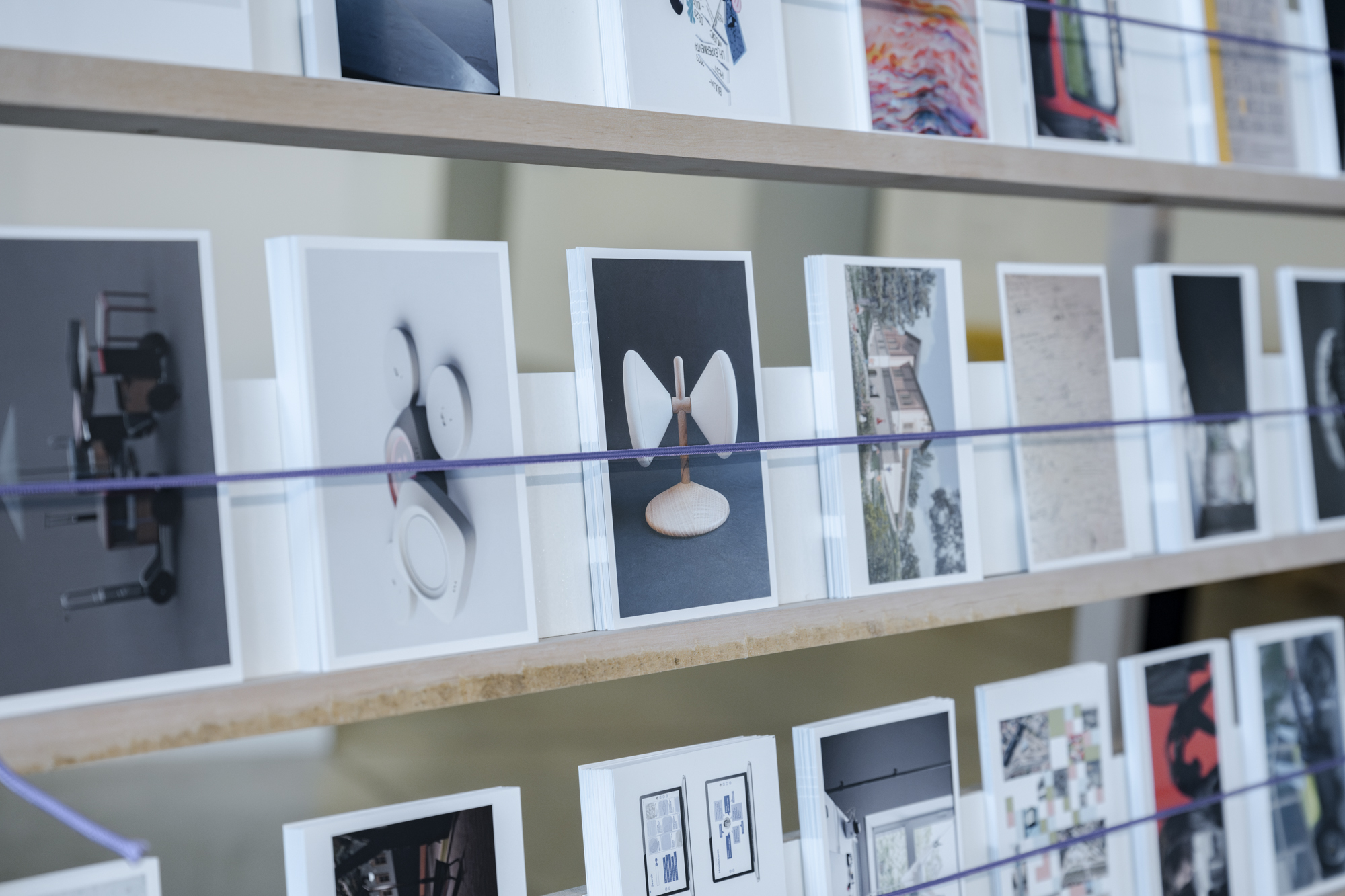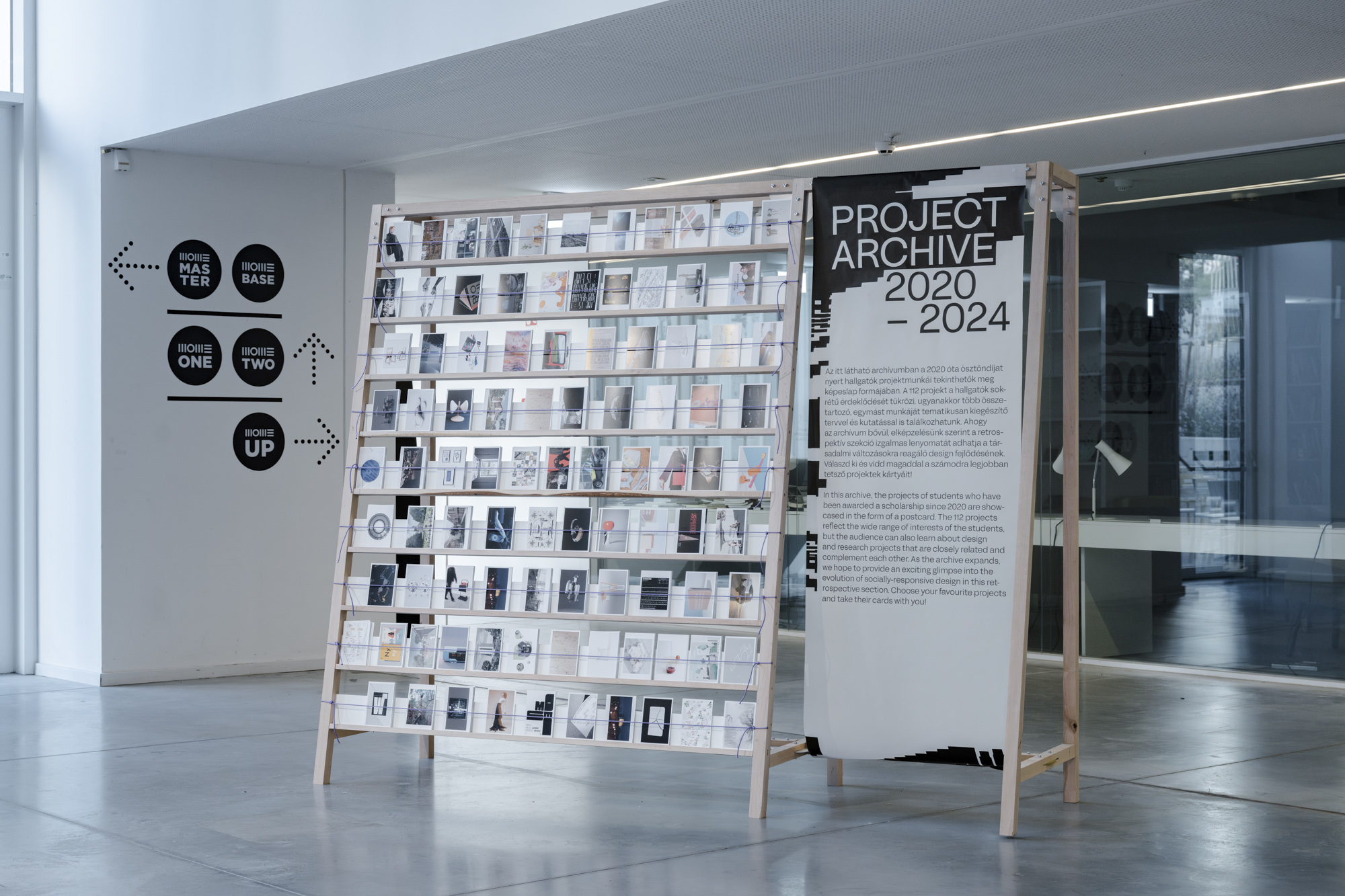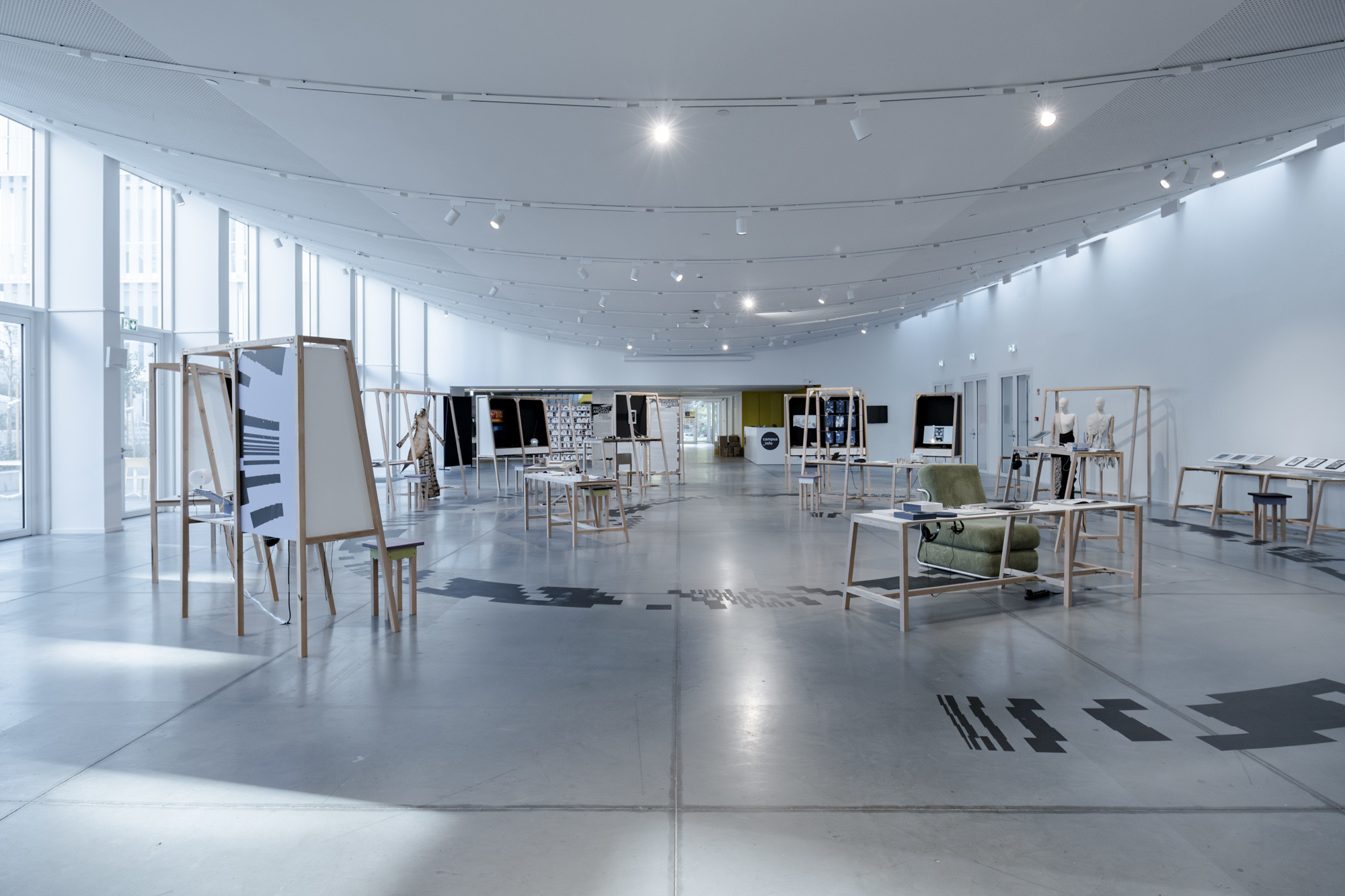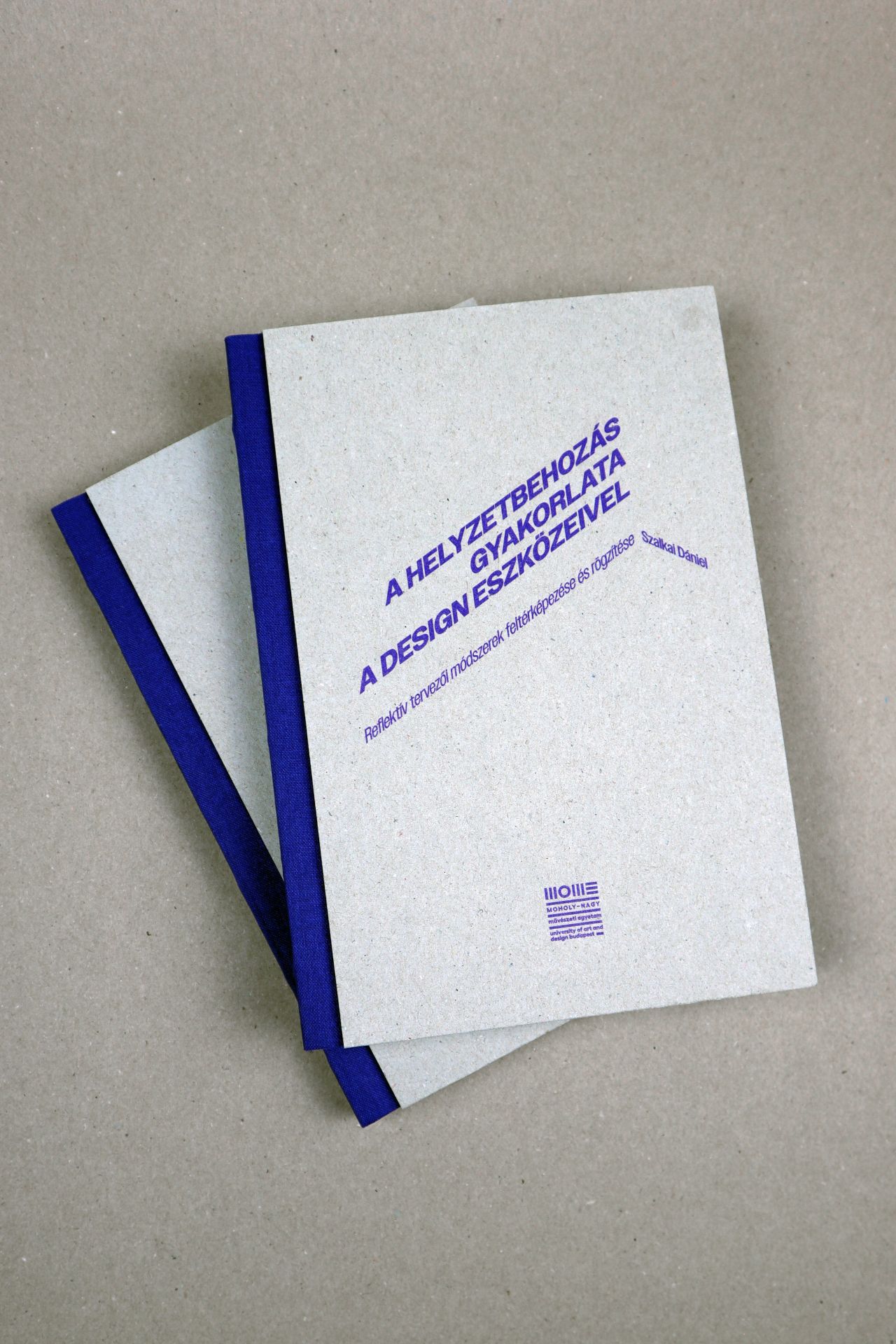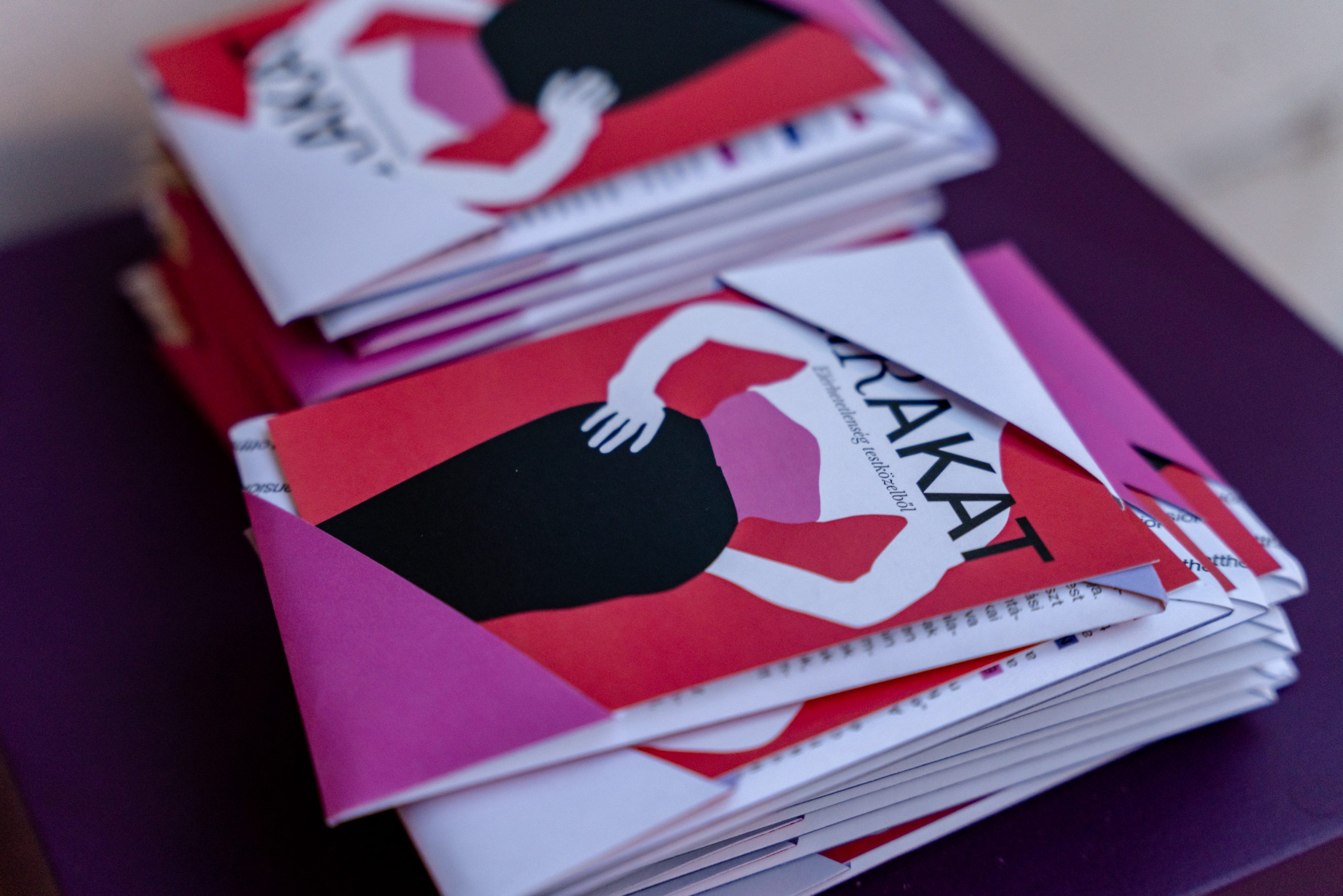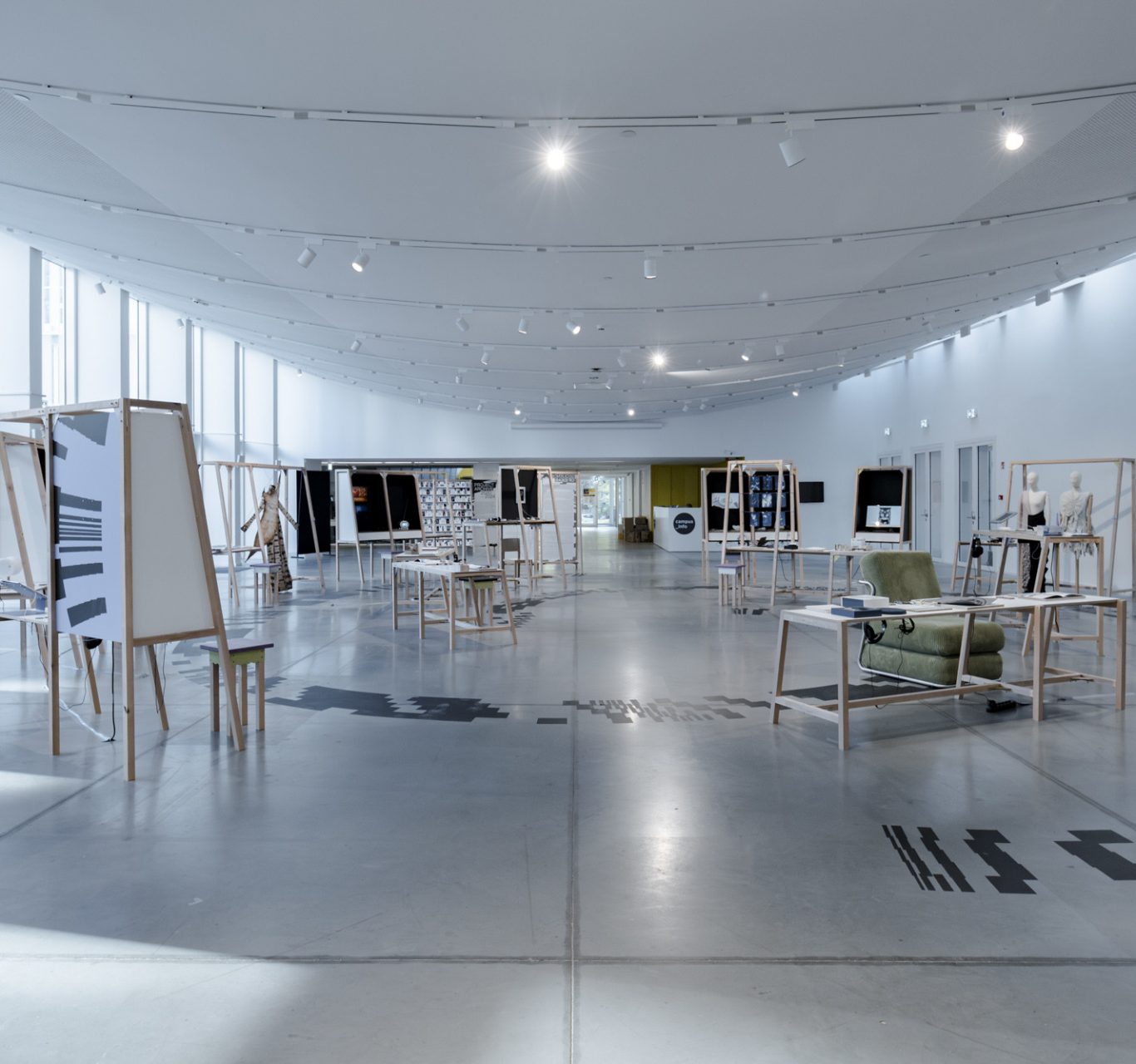
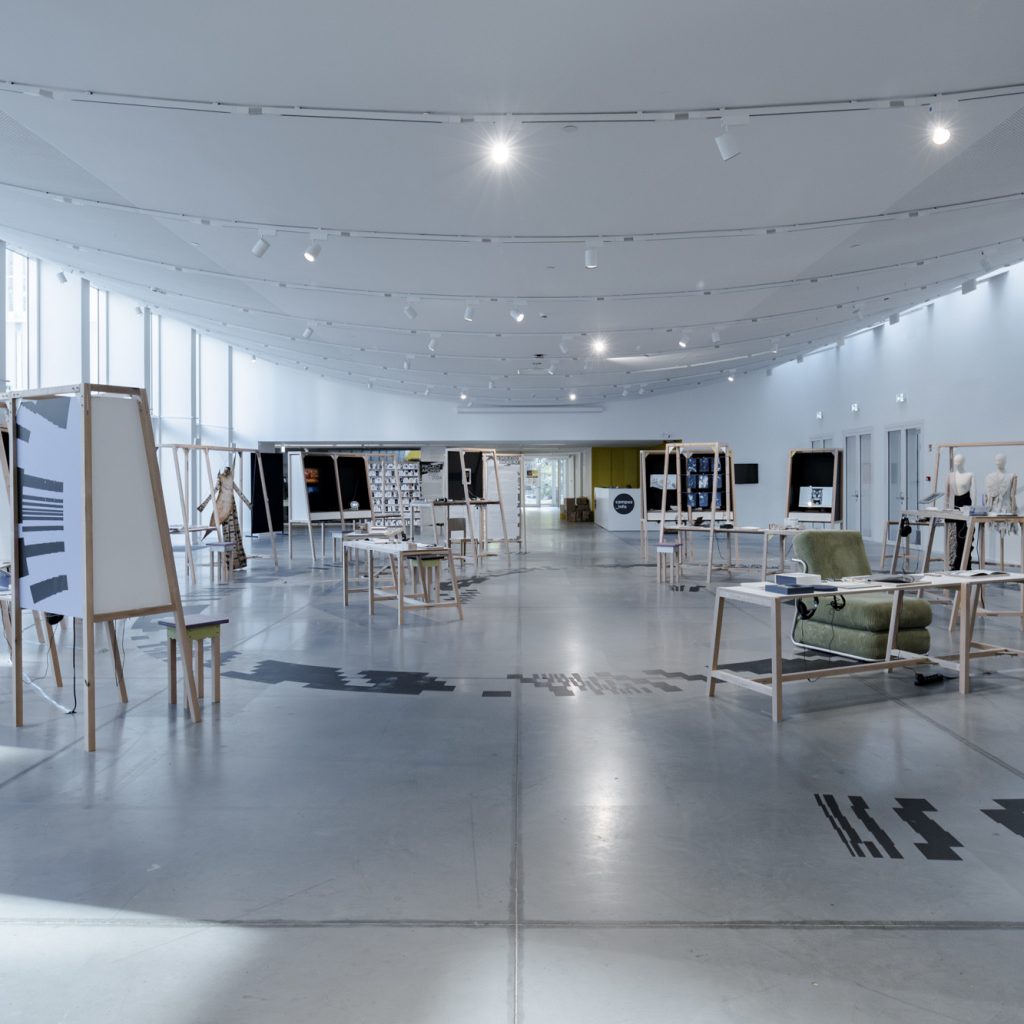
“This Exhibition was a collaborative effort by the MOME community”
The Stefan Lengyel Scholarship of Excellence (Hungarian acronym: SLKÖ) Programme, launched by the Moholy-Nagy University of Art and Design Foundation and named after designer Stefan Lengyel, has been rewarding students for their projects responding to complex societal or contemporary design challenges since autumn 2020. The express aim of the scholarship programme is to support participants in enhancing their competencies, gaining industry experience, and facilitating their professional integration. The exhibition titled Sequences of Ideas: Shared Visions in Design will showcase the diverse works of 31 scholarship recipients from the past two semesters. The awarded projects cover a variety of topics, including social design, urban revitalisation, and issues affecting the ageing population, showcasing the diverse, interdisciplinary approach taken by the students. We spoke with curators of the 2023 exhibition Noémi Viski and Júlia Bálint about the exhibition’s concept.
From left to right: Júlia Bálint and Noémi Viski curators, Hanna Kopacz and Ádám Tóth exhibition designers
Could you tell us about the concept behind the exhibition? What theme did you use to connect and structure the different projects?
Noémi Viski (NV): The concept evolves organically each year, and for me, this is usually the most exciting part of the curatorial process – finding a way to bring order to the many projects using vastly different themes and media in a way that adds value. For the first SLKÖ exhibition, we organised the works into five thematic groups; for the second, we arranged them in a sequence, linking them conceptually; and this year, we placed the projects on shared platforms, grouping them in pairs or trios. The tables are arranged to reveal connections between neighbouring groups in terms of content. Last year, we used floor markers to clarify these links between projects. This year, however, we have allowed for a more abstract, free-associative layout approach, resulting in an exhibition that invites broader interpretations. There are tables where we used work titles such as “contemporary critical approaches to media design,” “paraphrases of our cultural values,” “skills improvement for children,” or “critical design.” Yet, others may interpret the relationships between the projects differently, and this diversity of perspectives is exactly what we aim for this year.
What kind of installation solutions can we expect to see at the exhibition?
NV: In the first exhibition, the evolving, incubatory state of the projects was emphasised by boxes, which also had a practical, protective function in the bustling Ground space, which wasn’t originally designed for exhibitions. In the second exhibition, certain objects that required closer inspection were removed from the boxes, creating a more hybrid approach. This year, the boxes haven’t disappeared altogether but have instead been transformed and repurposed. MOME architecture alumna Hanna Kopacz worked as our visual designer, and together with her collaborators, Flóra Farkas and Ádám Tóth, developed a modular installation system that is easier to assemble, reusable, more practical to store, and locally produced, with the support of MOME alumni professionals. While this approach has its own challenges, requiring extra care for the objects on display, I’ve been eagerly anticipating the chance to work with the SLKÖ exhibition materials in this way.
Júlia Bálint (JB): This year, we used a more open exhibition format to foster a sense of community and allow freer access to the projects. In previous years, the exhibition was divided into separate, often closed or hybrid sections with limited exhibition space and too much distance between visitors and the projects and the underlying concepts. To break away from this closed structure, we introduced a “community table project” this year, designed to facilitate dialogue and spark inspiration for both artists and visitors. The students’ works are arranged in a spiral shape, symbolising the swirling nature of thought, the continuous evolution of the projects, and an openness to whether they can offer something greater when considered collectively.
What social or contemporary design issues are addressed by this year’s winners? What are the latest and most pressing themes from the artists’ perspectives?
JB: A significant number of this year’s winners reflected critically on the positive and negative aspects of digital technology and artificial intelligence. The impact of technology on the human body and its role in design resonates strongly with our generation. A prime example is second-year Textile Design student Eszter Kain’s project Bugs in the System. Inspired by AI-generated errors, Kain deliberately integrated these “bugs” into the materials and silhouettes of her knitted fabric and garment collection. Environmental and social changes, along with sustainability, remain central themes.
For instance, second-year Architecture student Borbála Véghelyi’s Community Street in Újbuda envisions a community-driven redevelopment of a former military cemetery. Building on the characteristics of the site, she developed her design for a new community street, connecting Budaörsi Road with the residential area, while also catering to the needs of local residents. The multifunctional spaces, designed for cultural, educational, recreational, and sports activities, aim to engage people of all generations.
Another project, Twisted and Distorted Reality by second-year Ceramic Design student Dorottya Vértessy aims to visualise the issues faced by the increasing number of anorexia patients and raise awareness about the subject. The ceramic plates provide a glimpse into the struggles associated with this eating disorder: slippery or spiked surfaces make it difficult to reach the food, while counting buttons symbolises the constant obsession with portion control. The project draws attention to the severity of the issue and helps shed light on the behaviour of those affected. The projects showcased by the SLKÖ award winners reflect on some of today’s most critical social and technological issues, offering insight into MOME students’ perspectives on these themes.
How did you approach presenting the projects of the Institute for Theoretical Studies alongside the design works?
JB: Exhibiting projects from the Institute for Theoretical Studies can be challenging, given their deeply conceptual and research-focused nature. To bridge this gap, we aimed to make the intangible aspects of their research more “tangible” by including a publication or object for each project. For example, Fruzsina Takáts’ project is accompanied by a booklet detailing her complex educational methodology, Laura Fedics’ study of Áron Lődi’s art is showcased with its original catalogue, while Enikő Szentiványi-Székely’s research is illustrated using a monoscope in the exhibition space. The projects of students from design programmes also include unconventional design tools – take for instance, Anna Sáringer’s data visualisation, which is inspired by the soundscapes of composer György Ligeti and accompanied by an audio component.
NV: The design and layout of the study booklets were entrusted to MOME’s graphic designers, and former students also assisted in creating documentation demonstrating the use of the designed objects. For example, two videos were made by last year’s SLKÖ scholarship recipient, Violetta Vigh. The exhibition was a collaborative effort from the MOME community, which is reflected in its title. Sequences of Ideas: Shared Visions in Design, was initially intended to highlight the logical structure of the arrangement of the works. However, we later realised that this sequential pattern pervades the entire exhibition design process, the scholarship programme, and perhaps even the workings of the university itself. The themes chosen by the first SLKÖ scholarship recipients influence those of the following years; a student becomes a scholar, and later, as an alumnus or professional, continues to work for the university. These observed processes, growth trajectories, and sequences also influenced the visual identity of this year’s exhibition and its refinement.
What opportunities does this exhibition offer students, and what does the SLKÖ scholarship give them?
NV: For many students, it marks their first group exhibition under the guidance of a curator, offering a slightly different experience compared to end-of-semester reviews. We initially worked through the projects together with Juli, identifying the focal points and the strongest statements of the works, and then offered suggestions to the students regarding potential and recommended ways to present their projects. This was followed by a collaborative brainstorming process, where ideas were proposed and discarded. I believe that these few weeks, filled with professional discussions and project management processes, have provided some added value for the students. However, perhaps even more important is that, through the exhibition, the university supports the creation of further developments – such as a publication, a second copy, a more refined prototype, or video documentation – that might not have otherwise come to fruition and that the students can carry forward for future exhibitions.
JB: Just as the scholarship programme evolves year by year based on feedback, the structure of the exhibition also builds on the experiences of previous years. This year, we set the goal of creating a retrospective archive wall to highlight the crucial role that past students play in shaping the themes and issues that future scholarship recipients will address in their creative and design work, thereby contributing to MOME’s intellectual legacy. The express, long-term aim of the exhibition is not just to be confined to the university walls, but to become a highlight of the entire Hungarian art scene. By timing the opening of the exhibition to coincide with the university’s open days, we invite more fellow students and prospective artists to engage in dialogue.
// /
The Sequences of Ideas – Shared Visions in Design exhibition featuring the works of the Stefan Lengyel Excellence Scholarship recipients is on view in the GROUND building from 16 October to 11 November 2024.
Participating students: Gergő ÁPRILI, Aurél Valentin BAJKOV, Fanni Zsófi BARANYI, Emese BUKOVINSZKY, Péter BUNFORD, Zoi DONTASZ, Calla Bettina ERNST, Zalán FAZEKAS, Laura FEDICS, Benedek FORGÁCS, Maja GALÁNTAI, Bernadett GARAI, Patrik Sándor GÁL, Máté GUTHY, Sára HECKER, Eszter KAIN, Balázs Ágoston KISS, Anna KŐSZEGHY, Kristóf LIPÓTZY, Sára MUSZKA, Csongor Boldizsár NAGY, Ágnes PETRUCZ, Eszter Enikő RŐCZEI, Maja SÁRDI, Anna SÁRINGER, Enikő SZENTIVÁNYI-SZÉKELY, Nóra SZILÁGYI, Fruzsina TAKÁTS, Borbála VÉGHELYI, Dorottya VÉRTESSY, Zoltán ZOBOKI
Curators: Júlia BÁLINT, Noémi VISKI
Exhibition design: Flóra FARKAS, Hanna KOPACZ, Ádám TÓTH
Graphic design: Diána LAJOS
Project management: Fruzsina FEIGL
Proofreader: Judit HELFRICH
Translation: espell translation & localization Ltd.
Implementation: Máté BARKÓCZI, Péter TÍMÁR, MALOM Project, MOME PrintShop
Photos: Máté Lakos
